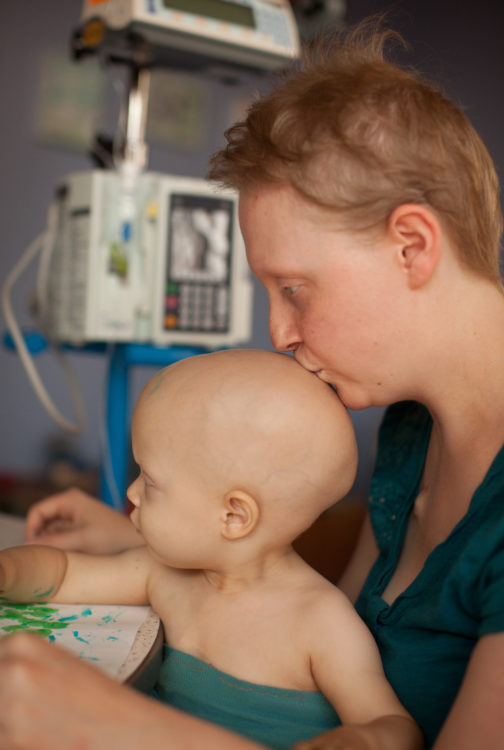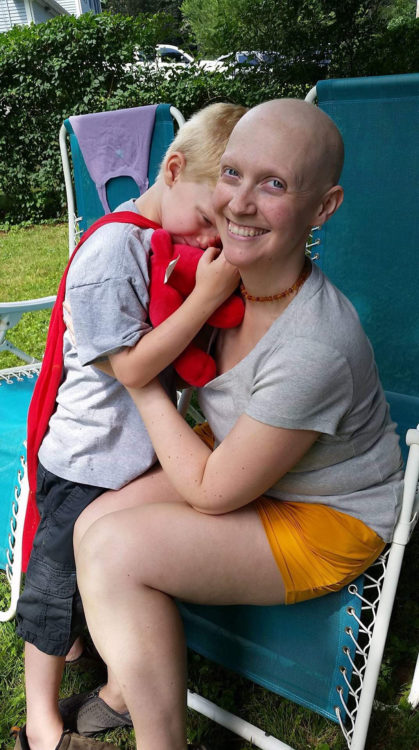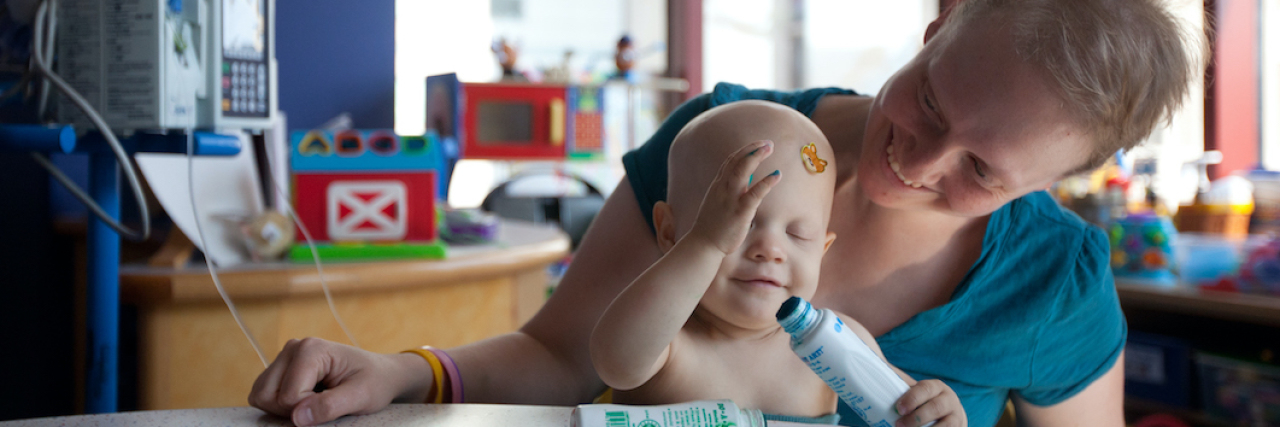As I sit here and think about everything opening again, everyone seems to be talking about going back to “normal,” and how that’s their desire. And between the laughing in my head and the utter concern for the fact that people don’t get it, it reminds me of people who are cancer patients like me, cancer families like us, people facing chronic illness and terminal illness, families who have medically fragile kids and adults — those of us who have been constantly living with new normals and what that really means.
See, once you get a diagnosis such as cancer or some other illness that’s going to be with you for a long time, or involve invasive treatment, or basically change your life forever, at the beginning you always wonder if there is a normal you will get back to. At the beginning you hold out hope that treatment will be short, and you’ll be all better and can go back to the way life was.
But quickly the reality sets in that there is no going back. You can’t reverse time, you can’t take away the fact that you had this diagnosis, and not only does it change you physically (especially while going through some sort of treatment or therapy), it changes you mentally as well. You won’t forget what happened the day you were diagnosed. You won’t forget what happened when your treatment didn’t work. You won’t forget how you felt when you had to tell your mother or your father or your spouse or your children that your life was going to change forever.
You see, there is no going “back to normal;” you can only create a new one.
We’ve done this ourselves more times than we would like to ever have. First with my cancer diagnosis after the birth of my first child, to her cancer diagnosis three months later. Her immediate relapse and ultimate death from her disease. My relapse with the birth of our second child, and the five and a half years of treatments ultimately failing before something finally worked. To deciding to have an autologous stem cell transplant (that I had never wanted to do) and the recovery from that. To COVID hitting just when my post-transplant isolation was ending. Creating a new normal is our personal normal.

So I think it’s interesting right now to be thinking about what our new normal will be. As we start to go back to work, as we start to see our friends and family again, as we start to hopefully send our kids back to school, as they start to interact socially again, what will the new normal look like? And the thing about COVID -19 is that there have been a lot of new normals along the way — even though we may not have recognized them at the time.
When it first came out, we didn’t think it was going to affect us because we were going to be able to trace it and stop it with normal measures. And when our kids couldn’t go to school, we got an email that said, “We’re not going to school tomorrow, we’ll see you on Monday.” And then they never went back. Our kids didn’t get to say goodbye, the teachers didn’t get to say goodbye to their students, and we had to transition to figuring out how to teach school at home. And while that looks different for every family, that’s part of this whole thing. When we figured out that it would be better to have adults stay home, not just the kids, then everyone stayed home — except those who had to go to work to be able to get us food, keep us healthy and be in the hospitals where some of the people contracting the disease ended up. And we all took that in stride, with complaints of course. Stress, loss of income for some, loss of sanity for many, loss of normalcy for everyone.
And what I realized was that the people who were most prepared for this weren’t the government or the healthcare workers; it wasn’t the people who run cities and towns and plan for contingencies like this. The people most prepared for this were us — the families and the patients with chronic illness or terminal disease. Because we’ve done this before. We’ve been shut in our houses or our hospital room. We’ve been not able to see our family. We’ve had to adhere to new schedules — medication times, doctors’ appointments — new normal, new life. And what we all know is that we can’t move backward. Once you have a diagnosis, even if you get better — no matter how long it takes; whether it’s a month, a week, or years — you can’t give the diagnosis back.

We can’t take this back either. Things we’re all going to do from now on? We’re all going to wash our hands all the time. Things we’re not going to do? We’re probably not going to shake hands as often. Maybe we’ll opt for a different opportunity, we’ll fist bump, we’ll elbow bump. We’ll nod, we’ll smile. We’re going to help our neighbors, we’re going to think of others, we’re going to try to come together as community. And as we slowly return to our jobs, and school, our families and friends, we have the opportunity to do better now that we know better.
This virus has made that happen many times. We learned about how it spread, we stayed far apart. We figured out that masks can help, so we started wearing them. Doctors and nurses figured out ways that would help ease symptoms and protect lives. They innovated on the fly; they shared the information that they figured out, and people made changes. And as we start to reopen, I think we need to remember that there’s going to be a long time when we know better, we do better. And complaining, “Why didn’t we do it this way from the beginning?” or trying to ignore the new because you want to still believe the old, doesn’t help progress us forward, it simply helps to keep us angry.
For instance — if you get diagnosed with cancer, and you do the first treatment and the treatment doesn’t work, your doctor’s going to tell you and they are going to offer another option. It’s a perfect example that when you know better, you do better. Like when we figured out that it wasn’t a good idea to send our kids back to school, and we all had to realize that we were going to be managing their learning for the rest of the year from home. So as things come out that are new — the CDC changes their message based on new evidence and says we should be wearing masks to help slow the spread; the government starts to reopen the economy with extra precautions for people in public places to take including staying six feet apart from people, extra heavy cleaning and sometimes temperature taking when going in the door — these things are part of the new normal. And while yes, it may feel frustrating and annoying, and you really wish you didn’t have to do it — when we know better, all we can do is do better.
And each time a new recommendation comes out, as long as it’s founded in science and it’s been looked at beyond a single case or a single person, it’s worth making adjustments and finding a new normal.
And in reality, it’s not much different than what we do every day. When we work at a job, we consistently learn; every day we do something new, even if it seems like we are doing the same routine. We might make a new friend, we might discover a new talent, we might find a new hobby. And instead of thinking about how to go back, if we simply continue to figure out what that new normal is, each day and each week, each month and each year, we can all move forward, progress forward, innovate forward. And since time only goes forward, really, we don’t have another option.
All images provided by the contributor

